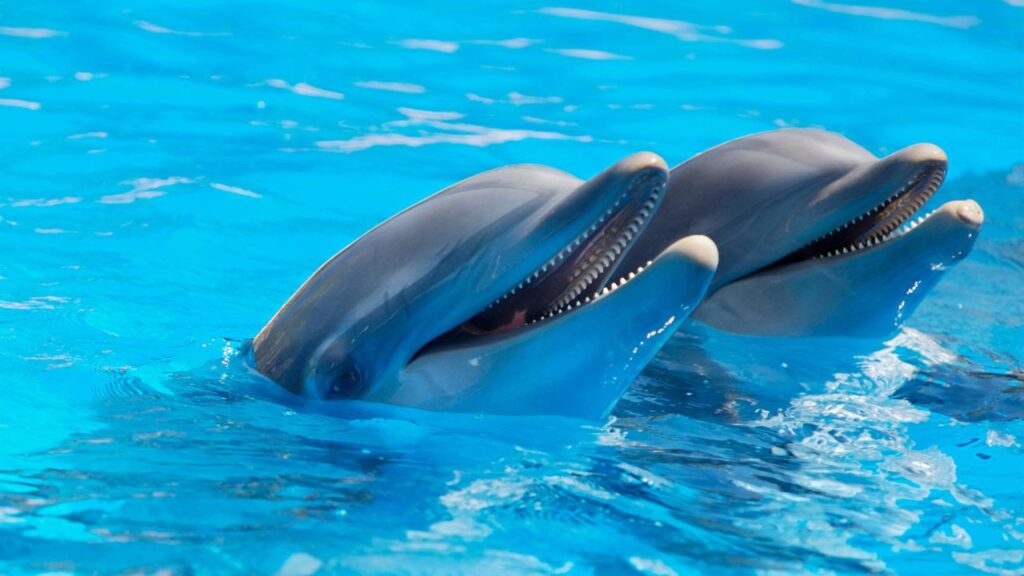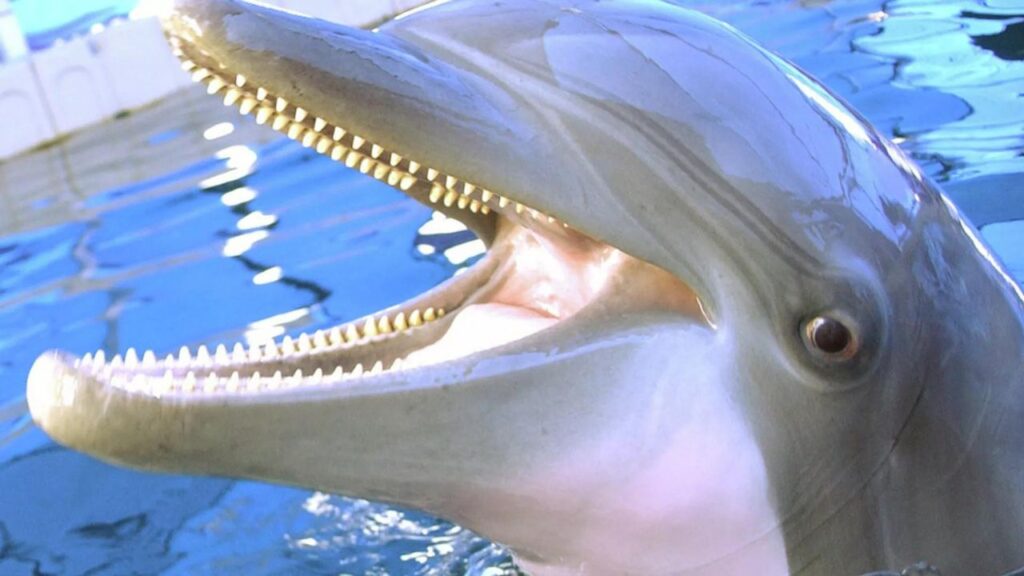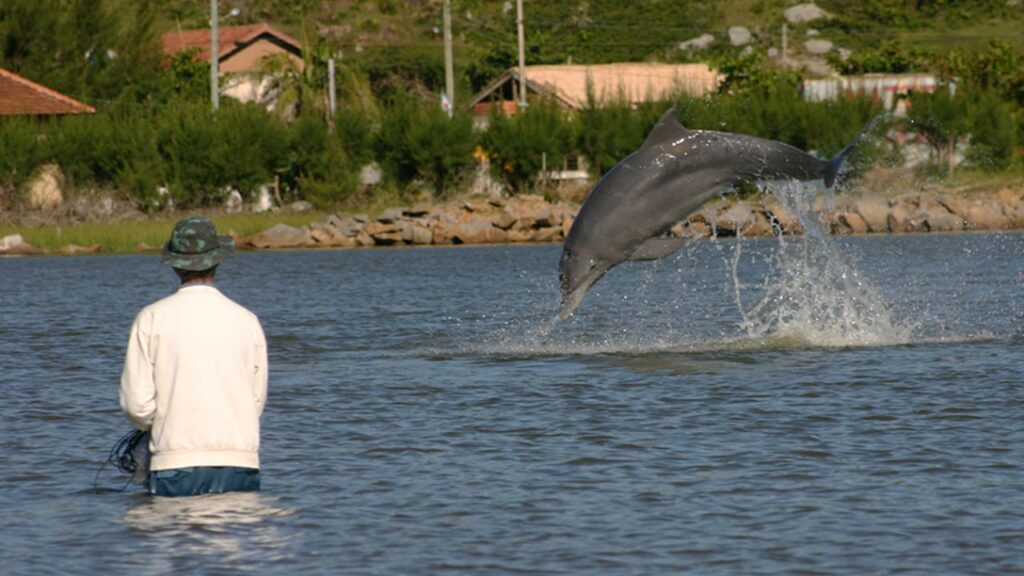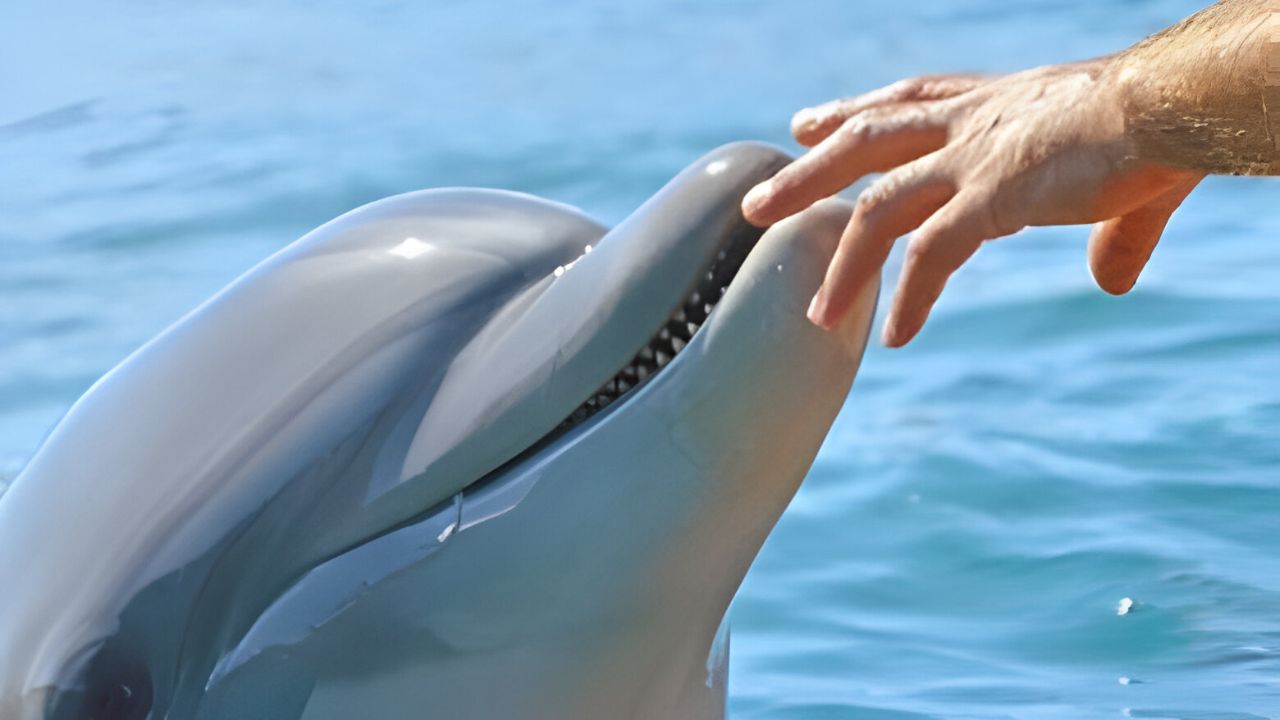Do Dolphins Attack Humans? Dolphins can attack humans, often when they feel threatened, stressed, or provoked.
Dolphins are often perceived as friendly and intelligent marine mammals, frequently featured in aquariums, marine parks, and popular media.
Their playful nature and seemingly permanent “smile” have made them favorites among animal lovers.
However, there is a lesser-known side to these creatures that raises a critical question: Do dolphins attack humans?
This blog post aims to provide a detailed, in-depth exploration of this topic, shedding light on the circumstances under which dolphins might become aggressive, the nature of their attacks, and how to stay safe around them.
Contents
Who Are Dolphins?
Biological Overview
Dolphins belong to the cetacean family, which also includes whales and porpoises. There are over 40 species of dolphins, with the bottlenose dolphin being the most well-known.
These marine mammals are highly intelligent, social, and capable of complex communication through a series of clicks, whistles, and body language.
Behavior and Social Structure
Dolphins live in groups called pods, which can range from a few individuals to several hundred.
They are known for their sophisticated hunting techniques and cooperative behaviors.
Their social structure is dynamic, often involving intricate relationships and alliances.
Human Interaction
Dolphins have been interacting with humans for centuries. [Do Dolphins Attack Humans?]
They are often trained for entertainment purposes in marine parks and are sometimes used in military applications due to their intelligence and trainability.
In the wild, they are known to approach boats and swimmers, often appearing curious and playful.

Do Dolphins Attack Humans?
Incidents and Case Studies
Recent Incident: Dolphin Attack in Japan (2022)
In 2022, a series of dolphin attacks occurred off the coast of Mihama, Japan. A man in his 60s was swimming when a dolphin bit him on the hand, causing severe injuries.
This incident was part of a string of dolphin attacks reported in the same area, raising concerns about the safety of swimming with wild dolphins.
Local authorities have since advised swimmers to stay cautious and avoid direct interaction with dolphins in the region.
Dusty the Dolphin Incident
In 2013, Valerie Ryan was swimming off the coast of County Clare in Ireland when she encountered a dolphin named Dusty.
Despite Dusty’s previous interactions with humans, she suddenly became aggressive and attacked Valerie, causing severe injuries, including fractured ribs and a damaged lung.
This incident highlighted the unpredictable nature of wild dolphins and the potential dangers they pose, even when they are familiar with human presence.
SeaWorld Attack
In 2012, an eight-year-old girl was bitten by a dolphin at SeaWorld during a feeding session. The dolphin, likely agitated by the interaction, bit the girl’s hand, causing a deep laceration.
This incident raised concerns about the safety of close encounters with dolphins in captivity. SeaWorld later implemented stricter guidelines to ensure the safety of visitors during interactive sessions with dolphins.
Cancun Incident
In 2019, a young British girl was attacked by dolphins during a swimming activity in Cancun, Mexico.
The dolphins bit her multiple times and dragged her underwater, resulting in numerous cuts and bruises.
This alarming event underscored the potential dangers of swimming with dolphins, even in controlled environments.
Following the incident, the facility reviewed its safety protocols to prevent similar occurrences in the future.
Types of Attacks
Dolphin attacks on humans can be categorized into several types:
- Biting: Dolphins have sharp teeth designed for catching fish, which can cause significant injury to humans. Bites often occur when dolphins feel threatened or agitated. In several reported cases, bites have resulted in deep wounds that required medical attention.
- Ramming: Dolphins use their strong snouts to ram into objects, including humans. This can result in serious injuries such as broken bones and internal damage. Ramming incidents are often attributed to territorial behavior or perceived threats.
- Dragging: In some cases, dolphins have been known to grab swimmers and drag them underwater, which can lead to drowning or near-drowning experiences. Such behavior is usually a result of the dolphin’s playful or aggressive tendencies, which can turn dangerous for humans.

Why Do Dolphins Attack?
Feeling Threatened
Dolphins, like many wild animals, can become aggressive if they feel threatened or cornered. Human behaviors such as grabbing, chasing, or sudden movements can provoke an attack.
It’s essential to understand that dolphins’ perception of threat can differ significantly from human expectations.
Stress and Captivity
Dolphins in captivity can experience high levels of stress, leading to unpredictable and aggressive behavior.
The confined space and lack of stimulation can exacerbate these stress levels, resulting in attacks on trainers and visitors.
Facilities that house dolphins often implement enrichment programs to reduce stress, but incidents still occur.
Rough Play
What might seem like playful behavior to a dolphin can be harmful to humans. Dolphins often engage in rough play with each other, which includes biting and ramming. When this play is directed at humans, it can cause injuries.
Dolphins’ powerful bodies and playful nature can easily lead to accidental harm during interactions. [Do Dolphins Attack Humans?]
Sexual Aggression
There have been instances of dolphins displaying sexually aggressive behavior towards humans.
This usually involves male dolphins trying to mount or hump swimmers, which can be frightening and dangerous.
Such behavior is more likely to occur during the dolphins’ mating season or when they are experiencing hormonal changes.

Dolphins’ Natural Behavior
Hunting Techniques
Dolphins are apex predators with complex hunting strategies. They often hunt in groups, using tactics like herding fish into tight balls and taking turns feeding.
Their intelligence and cooperative behavior make them efficient hunters. Techniques such as “fish whacking,” where dolphins use their tails to stun fish, demonstrate their sophisticated hunting methods.
Social Structure
Dolphin pods have a hierarchical social structure, with dominant individuals leading the group.
They form strong bonds and communicate through a variety of vocalizations and body language.
These social structures are essential for their survival, as they rely on group cooperation for hunting and protection.
Aggression Among Dolphins
Aggression is not uncommon among dolphins, particularly during mating season. Male dolphins often form alliances and compete for access to females, sometimes resulting in violent encounters.
This aggressive behavior can occasionally be directed towards humans, especially if the dolphins are stressed or agitated.
See Also: Do Orcas Attack Humans? Unveiling the Mystery!
FAQs
Are Dolphins Dangerous to Humans?
Dolphins are generally not dangerous to humans, but they are wild animals capable of causing harm if provoked or stressed. It is essential to approach them with caution and respect. While most interactions with dolphins are benign, understanding the potential risks is crucial for safety.
Is It Safe to Swim with Dolphins?
Swimming with dolphins can be risky, especially in the wild. It is safer to interact with them in controlled environments, following all safety guidelines provided by trained professionals. Even in such settings, it’s important to be aware of the dolphins’ body language and behavior to avoid potential danger.
What Should You Do If a Dolphin Approaches You?
If a dolphin approaches you in the wild, remain calm and avoid sudden movements. Do not attempt to touch or feed the dolphin. Maintain a safe distance and observe the animal without interfering with its behavior if you feel threatened, slowly back away without turning your back on the dolphin.
How Can Dolphin Attacks Be Prevented?
To prevent dolphin attacks, it is crucial to respect their space and avoid behaviors that might provoke them. In captivity, ensuring that dolphins have adequate space and stimulation can help reduce stress and aggression. Public education about appropriate behavior around dolphins can also play a significant role in preventing attacks.
Are Dolphins Aggressive to Humans?
Dolphins are not typically aggressive towards humans. However, they can become aggressive if their personal space is invaded or if they feel stressed or threatened. Understanding the signs of dolphin distress, such as tail slapping or sudden changes in movement, can help prevent negative interactions.
Why Do Dolphins Bite?
Dolphins bite primarily as a form of defense. They may also bite if they are irritated, playful, or feel threatened. It is important to avoid provoking dolphins by respecting their space and avoiding direct contact.
Can Dolphins Be Trained to Avoid Aggressive Behavior?
Dolphins can be trained to some extent to avoid aggressive behavior through positive reinforcement and proper management practices. However, their natural instincts can never be entirely suppressed, and it’s essential to recognize their wild nature.
Conclusion: Do Dolphins Attack Humans?
Dolphins are fascinating and intelligent creatures, but they are also wild animals with instincts that can sometimes lead to aggressive behavior towards humans.
Understanding the reasons behind dolphin attacks and taking precautions can help ensure safe and respectful interactions with these marine mammals.
Whether in the wild or in captivity, it is essential to remember that dolphins deserve our respect and care to prevent harmful encounters.
In conclusion, while dolphin attacks on humans are rare, they do occur under certain circumstances.
By respecting these animals and understanding their behavior, we can enjoy their beauty and intelligence without compromising our safety.
Dolphins have a lot to teach us about marine life, and with proper awareness and respect, we can coexist peacefully with these remarkable creatures.

Hello, I am Rosa Ellis, a mother of two and a wildlife blogger. I grew up in New York City, but I love exploring forests. I’ve traveled to places like Yellowstone National Park and the Amazon Rainforest to see animals up close. I know a lot about animal behavior and which animals can be dangerous to humans. Thanks for visiting my blog!

